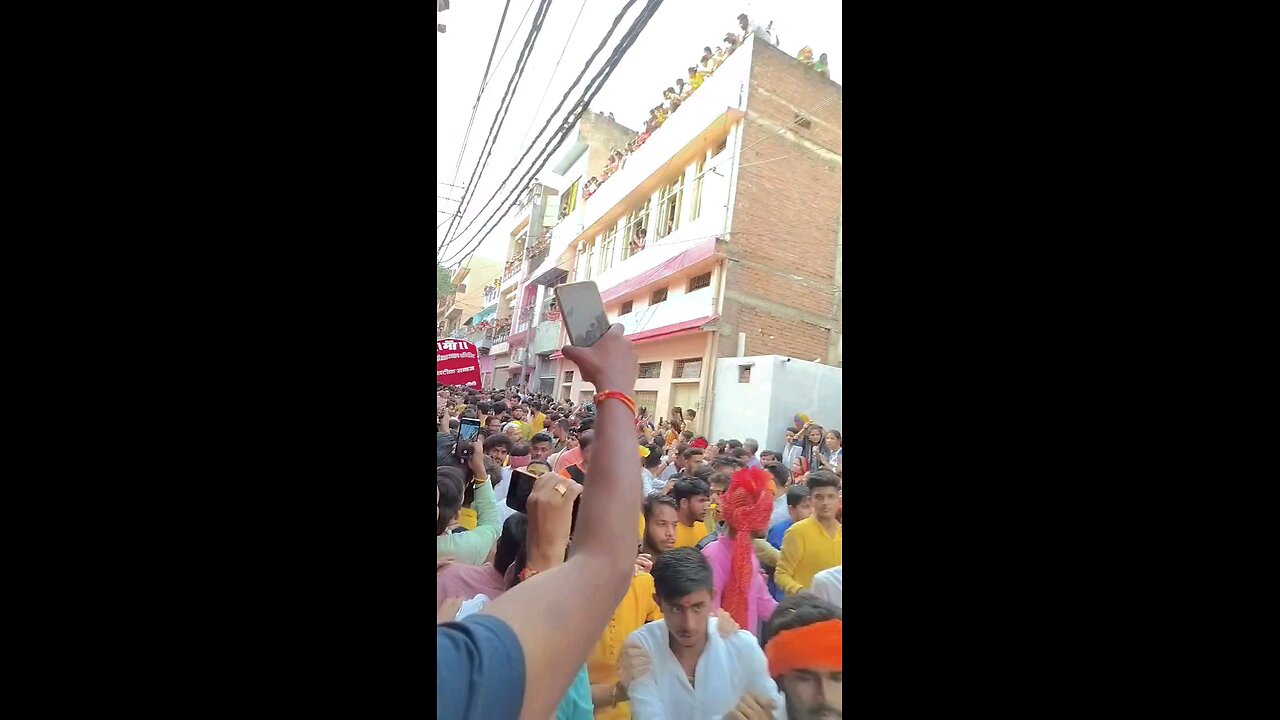Premium Only Content

Most Poular Festival in india 🇮🇳
Navratri, (Sanskrit: “Nine Nights”) in Hinduism, major festival held in honour of the divine feminine. Navratri occurs over 9 days during the month of Ashvin, or Ashvina (in the Gregorian calendar, usually September–October). It often ends with the Dussehra (also called Vijayadashami) celebration on the 10th day. In some parts of India, Dussehra is considered a focal point of the festival, making it effectively span 10 days instead of 9. Additionally, as Navratri depends on the lunar calendar, in some years it may be celebrated for 8 days, with Dussehra on the 9th. There are four similar festivals, also called Navratri, which are held at various stages of the year. However, the early autumn festival, also called Sharad Navratri, is the most significant. It begins on the same day as Durga Puja, a 10-day festival devoted to the victory of the goddess Durga, which is particularly celebrated in certain eastern states.
Subscribe
HomeGames & QuizzesHistory & SocietyScience & TechBiographiesAnimals & NatureGeography & TravelArts & CultureMoneyVideos
Navratri
Table of Contents
HomePhilosophy & ReligionReligious Beliefs
History & Society
Navratri
Hindu festival
Actions
Also known as: Navaratri, Sharad Navratri
Written and fact-checked by
The Editors of Encyclopaedia Britannica
Last Updated: Nov 11, 2023 • Article History
Table of Contents
Recent News
Nov. 8, 2023, 5:13 AM ET (CBC)
Garba night takes over Regina
Nov. 6, 2023, 5:19 AM ET (Business Insider India)
Retail auto sales up 13% MoM in October, but high inventory levels in PV a concern
Summary
Read a brief summary of this topic
Navratri, (Sanskrit: “Nine Nights”) in Hinduism, major festival held in honour of the divine feminine. Navratri occurs over 9 days during the month of Ashvin, or Ashvina (in the Gregorian calendar, usually September–October). It often ends with the Dussehra (also called Vijayadashami) celebration on the 10th day. In some parts of India, Dussehra is considered a focal point of the festival, making it effectively span 10 days instead of 9. Additionally, as Navratri depends on the lunar calendar, in some years it may be celebrated for 8 days, with Dussehra on the 9th. There are four similar festivals, also called Navratri, which are held at various stages of the year. However, the early autumn festival, also called Sharad Navratri, is the most significant. It begins on the same day as Durga Puja, a 10-day festival devoted to the victory of the goddess Durga, which is particularly celebrated in certain eastern states.
garba
See all media
Category: History & Society
Sanskrit:
In full:Sharad Navratri
Navratri also spelled:Navaratri
Related topics:garbaDurga PujaDussehra
See all related content →
Navratri is celebrated differently in India’s various regions. For many people it is a time of religious reflection and fasting, while for others it is a time for dancing and feasting. Among fasting customs are observing a strict vegetarian diet and abstaining from alcohol and certain spices. Dances performed include garba, especially in Gujarat. Typically, the festival’s nine nights are dedicated to different aspects of the divine feminine principle, or shakti. While the pattern varies somewhat by region, generally the first third of the festival focuses on aspects of the goddess Durga, the second third on the goddess Lakshmi, and the final third on the goddess Sarasvati. Offerings are often made to the goddesses and their various aspects, and rituals are performed in their honour. One popular ritual is Kanya Puja, which takes place on the eighth or ninth day. In this ritual nine young girls are dressed as the nine goddess aspects celebrated during Navratri and are worshipped with ritual foot washing and given offerings such as food and clothing.
Among some followers of the goddess Durga, who are particularly predominant in Bengal and Assam, the festival is known as or coincides with the Durga Puja (“Rite of Durga”). Special images of Durga commemorating her victory over the buffalo-headed demon Mahishasura are worshipped daily, and on the 10th day (Dussehra) they are taken in jubilant processions to nearby rivers or reservoirs for immersion in water. In addition to family observances, the puja, or ritual, days are also celebrated with public concerts, recitations, plays, and fairs.
In some regions, Dussehra is collected into Navratri, and the entire 10-day celebration is known by that name. Whether throughout the festival or as the 10th day, Dussehra is a time to celebrate the triumphs of good over evil, such as Durga’s victory over Mahishasura. In some parts of India, Dussehra is associated with the victory of the god Rama over the demon-king Ravana. In northern India the Ram Lila (“Play of Rama”) is the highlight of the festival. On successive nights different episodes of the epic poem the Ramayana are dramatized by young actors elaborately costumed and masked; the pageant is always climaxed by the burning of huge effigies of the demons. Athletic tournaments and hunting expeditions are often organized. Some celebrate by erecting bonfires and burning effigies of Ravana, which are sometimes stuffed with fireworks. In many regions Dussehra is considered an auspicious time to begin educational or artistic pursuits, especially for children.
-
 LIVE
LIVE
Barry Cunningham
12 hours agoPRESIDENT TRUMP HAS DEMOCRATS IN SHAMBLES AND LEE GREENWOOD INTERVIEW!
1,597 watching -
 DVR
DVR
I_Came_With_Fire_Podcast
10 hours agoCHINA SPYING AGAIN | Gun Con Kicks Out AG | Illegal Labor | Trump Sued | China and the 2020 Election
23.5K2 -
 9:13:10
9:13:10
Spartan
10 hours agoPro Halo Player | Short scrim at 3 EST, Pro League Match vs CoL at 5 EST
28.3K1 -
 1:27:58
1:27:58
Glenn Greenwald
8 hours agoWhy are Big Tech Execs Integrating into the US Military? CBS Pays Trump $15 Million: With FIRE's Nico Perrino; Diddy Verdict Locals Exclusive | SYSTEM UPDATE #480
104K36 -
 1:29:31
1:29:31
Badlands Media
20 hours agoAltered State S3 Ep. 35: Diddy’s Show Trial, Plastic Diesel, and the Myth of Modern Marvels
49.4K6 -
 28:30
28:30
World2Briggs
10 hours ago $1.49 earnedPortland’s 25-Year Collapse: The Timeline Nobody Wanted to Believe
21.3K11 -
 6:44
6:44
WhaddoYouMeme
5 hours ago $0.53 earnedThe TRUTH About The God Diddy Worships
18.7K9 -
 1:41:24
1:41:24
Joker Effect
4 hours agoRUMBLE AMBASSADOR INTERVIEW - VAPINGAMERS... RumbleGaming is growing... we find out how and why!
16.8K9 -
 2:01:40
2:01:40
Melonie Mac
6 hours agoGo Boom Live Ep 53!
29.3K2 -
 55:21
55:21
RiftTV
8 hours agoIs The Catholic Church the TRUE CHURCH of Jesus Christ? | The Rift | Guest: Timothy Gordon
46.4K38